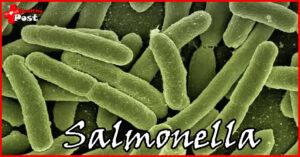
what do you know about Cocci – Streptococcus spp.
Most cocci are gram-positive bacteria
G+ cocci: Staphylococcus, Streptococcus, Enterococcus
G-cocci: Neisseria
——————————————————-
Streptococci The main pathogenic species of cocci to humans are group A Streptococcus and Streptococcus pneumoniae.
About 90% of the streptococci that are pathogenic to humans belong to group A , and group A streptococci that are pathogenic to humans mostly show type B hemolysis .
1. According to hemolysis phenomenon: type A, type B, type C
2. According to the antigenic structure of C antigen (polysaccharide antigen): A (Streptococcus pyogenes)\B (Streptococcus agalactiae)\C\D (Enterococcus)\E\F…
( The medically important streptococci mainly include Streptococcus pyogenes, Streptococcus viridans, Streptococcus pneumoniae, and Streptococcus agalactiae)
[Biochemical reactions]
1. Catalase negative
2. Decompose glucose, produce acid but not gas.
3. Streptococci generally do not decompose inulin and are not dissolved in bile . They can be used to identify type A hemolytic Streptococcus and Streptococcus pneumoniae. Streptococci do not produce catalase.
[Antigen]
①Polysaccharide antigen (C antigen); ②Surface antigen (protein antigen); ③Nucleoprotein antigen (P antigen)
[Pathogenic substances]
1. Cell wall components: adhesin, M protein, peptidoglycan
2. Exotoxins : Pyrogenic exotoxins (erythematous toxin, scarlet fever toxin), streptolysin
3. Invasive enzymes: hyaluronidase, streptokinase (fibrinolytic protease), streptavidin (DNA enzyme)
1. Group A Streptococcus
Group A Streptococcus mainly includes Streptococcus pyogenes or β-hemolytic Streptococcus (beta-hemolytic Streptococcus). It is a common bacterial infection in humans and is also the most pathogenic to humans among Streptococci. of bacteria.
[Pathogenic Substances]
1. M protein: the main pathogenic factor of group A streptococci. Streptococci containing M protein are resistant to phagocytosis and the ability to resist bactericidal effects within phagocytes.
2. Peptidoglycan: The peptidoglycan of group A streptococci has the effects of causing heat, dissolving platelets, increasing vascular permeability, and inducing experimental arthritis.
3. Pyrogenic exotoxins (erythema toxin, scarlet fever toxin): produced by group A streptococci carrying lysogenic phage, and have superantigenic effects.
4. Streptococci (DNAse): Dissolve DNA in pus, reduce its viscosity, and promote the spread of bacteria, mainly produced by group A, C, and G streptococci.
[Diseases caused by Group A Streptococcus]
⑴ Purulent infections: such as local skin and subcutaneous tissue infections (erysipelas, lymphangitis, cellulitis, carbuncle, impetigo, etc.) and other systemic infections (purulent tonsillitis, pharyngitis, Sinusitis, otitis media and puerperal fever, etc.).
⑵ Toxic infections: such as scarlet fever and streptococcal toxic shock syndrome .
⑶Allergic diseases: such as rheumatic fever, acute glomerulonephritis , etc.
2. Streptococcus pneumoniae (pneumococcus)
is the main pathogenic bacteria of bacterial lobar pneumonia, meningitis, and bronchitis.
1. Biological characteristics
① Belongs to G+ cocci, has high nutritional requirements , and is facultatively anaerobic. The colonies on the blood agar are small and form a grass-green hemolytic ring.
② Decompose glucose, maltose, lactose, and sucrose, producing acid but not gas.
③The reliable identification method is the bile bacteriolysis test .
④ Weak resistance to physical and chemical factors and sensitive to general disinfectants. 2. There is a grass-green a hemolytic ring around the Streptococcus pneumoniae colonies on the blood agar plate of
the pathogenic substance
capsule, lipoteichoic acid, pneumolysin O, and neurofluoridase. Streptococcus pneumoniae should be mainly differentiated from type A hemolytic Streptococcus using the following methods: bile bacterium test, inulin fermentation test, and capsule swelling test. 3. Group B Streptococcus (GBS) – Streptococcus agalactiae • Neonatal infection (through birth canal or respiratory tract) sepsis and meningitis have high mortality rate. 4. Group D Streptococcus – Enterococcus • Opportunistic pathogenic bacteria, important pathogenic bacteria in hospital infections, common in urinary tract infections. 5. Group A hemolytic Streptococcus • Is a normal flora in the oral cavity and upper respiratory tract • An opportunistic pathogen that can cause subacute bacterial endocarditis

